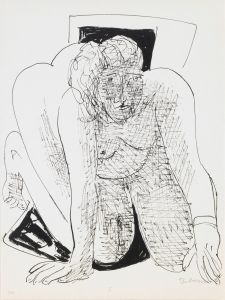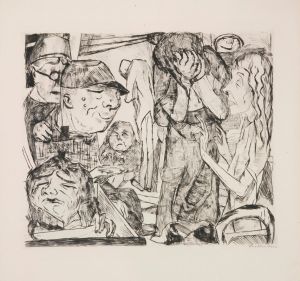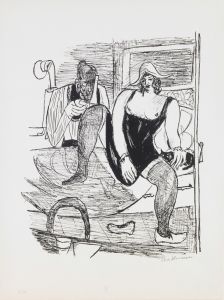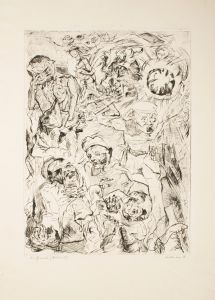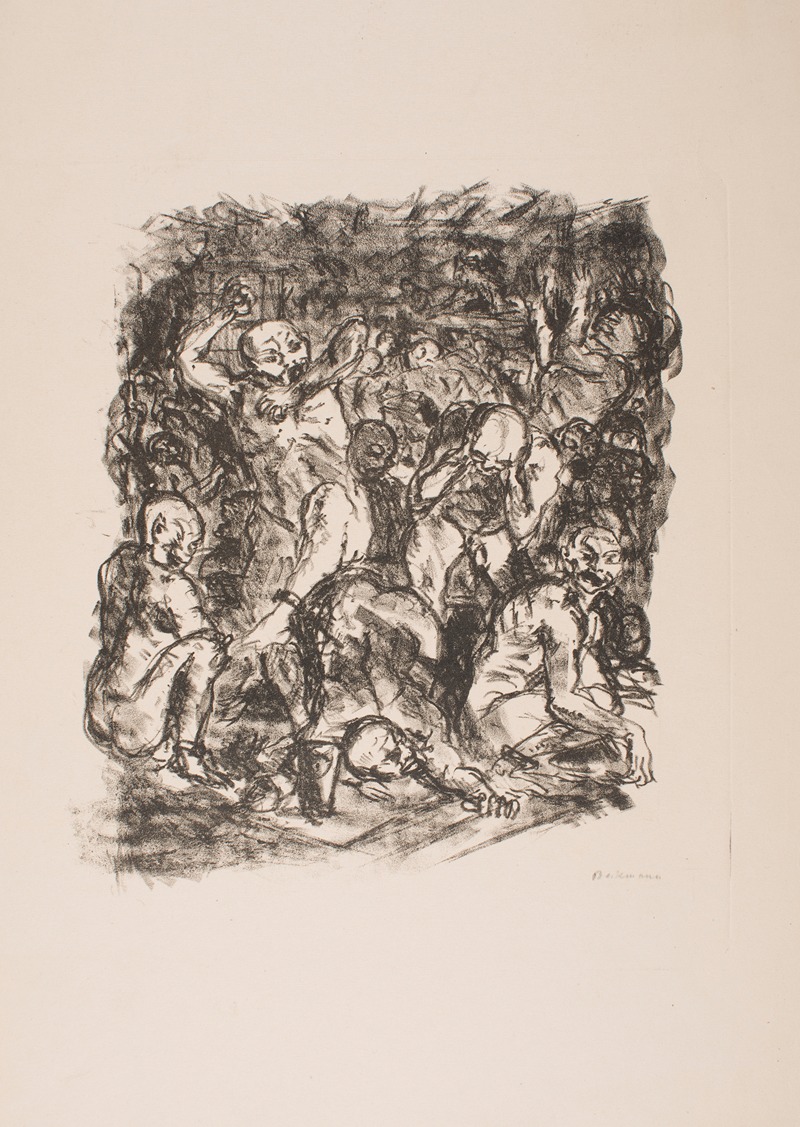
The Prisoners Bathing
A hand-painted replica of Max Beckmann’s masterpiece The Prisoners Bathing, meticulously crafted by professional artists to capture the true essence of the original. Each piece is created with museum-quality canvas and rare mineral pigments, carefully painted by experienced artists with delicate brushstrokes and rich, layered colors to perfectly recreate the texture of the original artwork. Unlike machine-printed reproductions, this hand-painted version brings the painting to life, infused with the artist’s emotions and skill in every stroke. Whether for personal collection or home decoration, it instantly elevates the artistic atmosphere of any space.
Max Beckmann's "The Prisoners Bathing" is a significant work by the German painter, known for his contributions to the Expressionist movement. Beckmann, born in 1884, was a prominent figure in early 20th-century art, and his works often reflect the tumultuous socio-political landscape of his time. "The Prisoners Bathing" is one of his many paintings that encapsulate his unique style and thematic concerns.
Beckmann's art is characterized by bold colors, strong lines, and a focus on the human condition. His works often explore themes of suffering, existential angst, and the complexities of human relationships. "The Prisoners Bathing" fits within this framework, as it depicts a scene that is both intimate and unsettling. The painting portrays a group of prisoners engaged in the act of bathing, a moment that is typically private and personal, yet here it is rendered in a public and exposed manner.
The painting is notable for its composition and use of color. Beckmann employs a palette that is both vibrant and somber, using contrasts to highlight the tension within the scene. The figures are rendered in a manner that is both realistic and abstract, a hallmark of Beckmann's style. His use of line and form creates a sense of movement and dynamism, drawing the viewer into the scene and inviting them to contemplate the lives and emotions of the subjects depicted.
"The Prisoners Bathing" can be seen as a reflection of Beckmann's own experiences and the broader historical context of the time. Beckmann lived through both World Wars and the rise of the Nazi regime in Germany, events that had a profound impact on his life and work. His art often grapples with themes of confinement, alienation, and the struggle for freedom, themes that are evident in this painting.
The depiction of prisoners in a vulnerable state may also be interpreted as a commentary on the loss of individuality and autonomy, a recurring theme in Beckmann's oeuvre. The act of bathing, typically associated with cleansing and renewal, takes on a more complex meaning in this context, suggesting both the possibility of redemption and the inescapable nature of the prisoners' plight.
Beckmann's work was not always well-received during his lifetime, particularly in Nazi Germany, where his art was labeled as "degenerate." Despite this, he continued to create, and his paintings have since gained recognition for their emotional depth and technical mastery. "The Prisoners Bathing" is a testament to Beckmann's ability to convey complex human emotions and social commentary through his art.
Today, Max Beckmann is celebrated as one of the leading figures of 20th-century art, and his works are held in high esteem by art historians and collectors alike. "The Prisoners Bathing" remains an important piece within his body of work, exemplifying his skill as a painter and his commitment to exploring the human condition through art.










